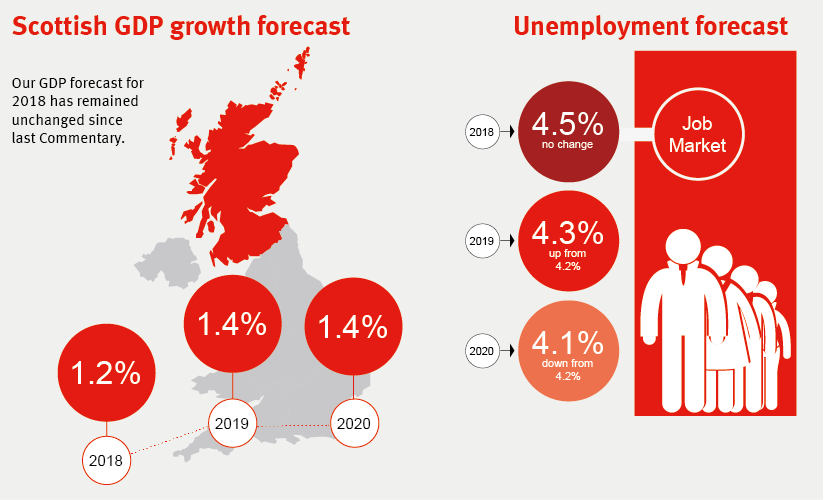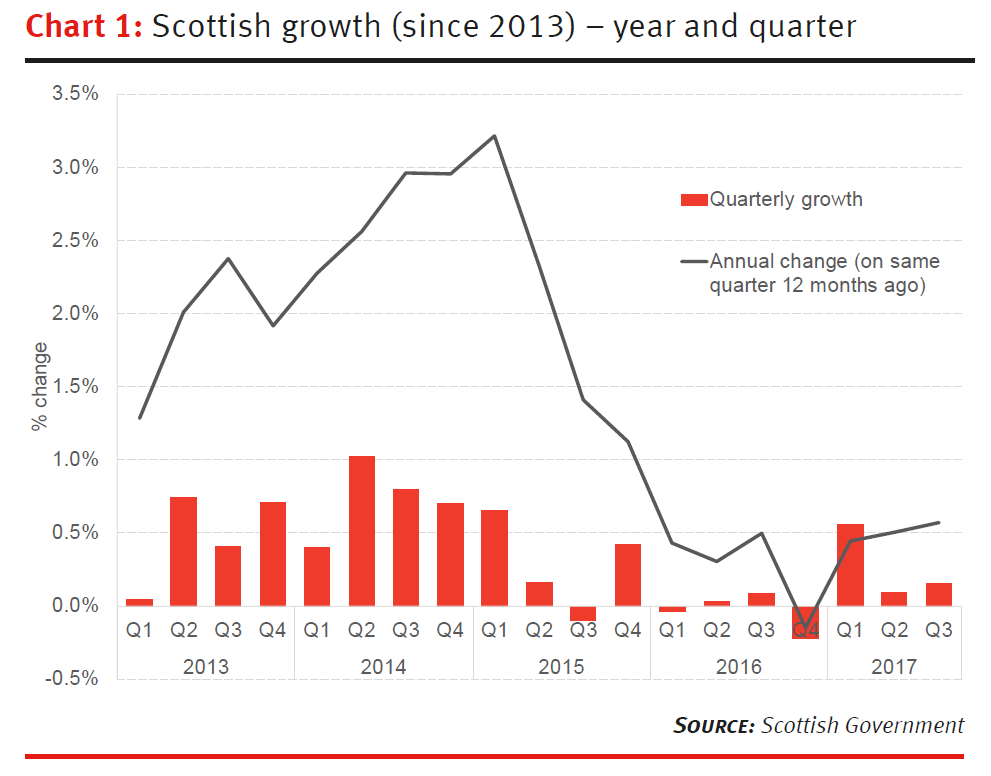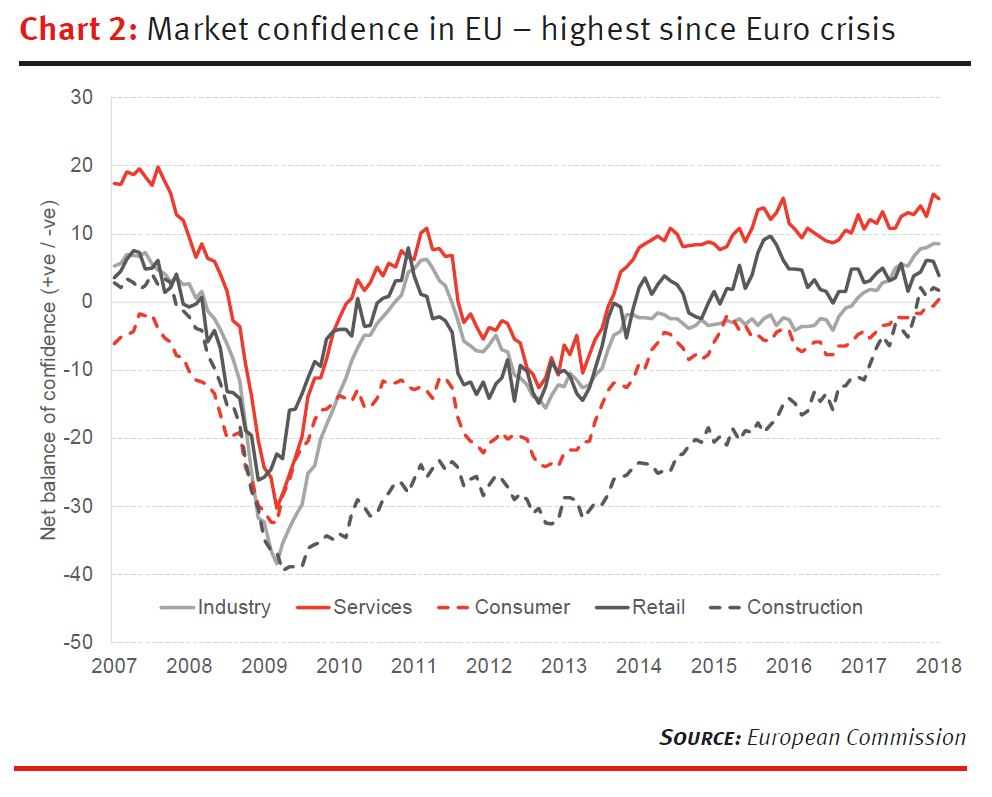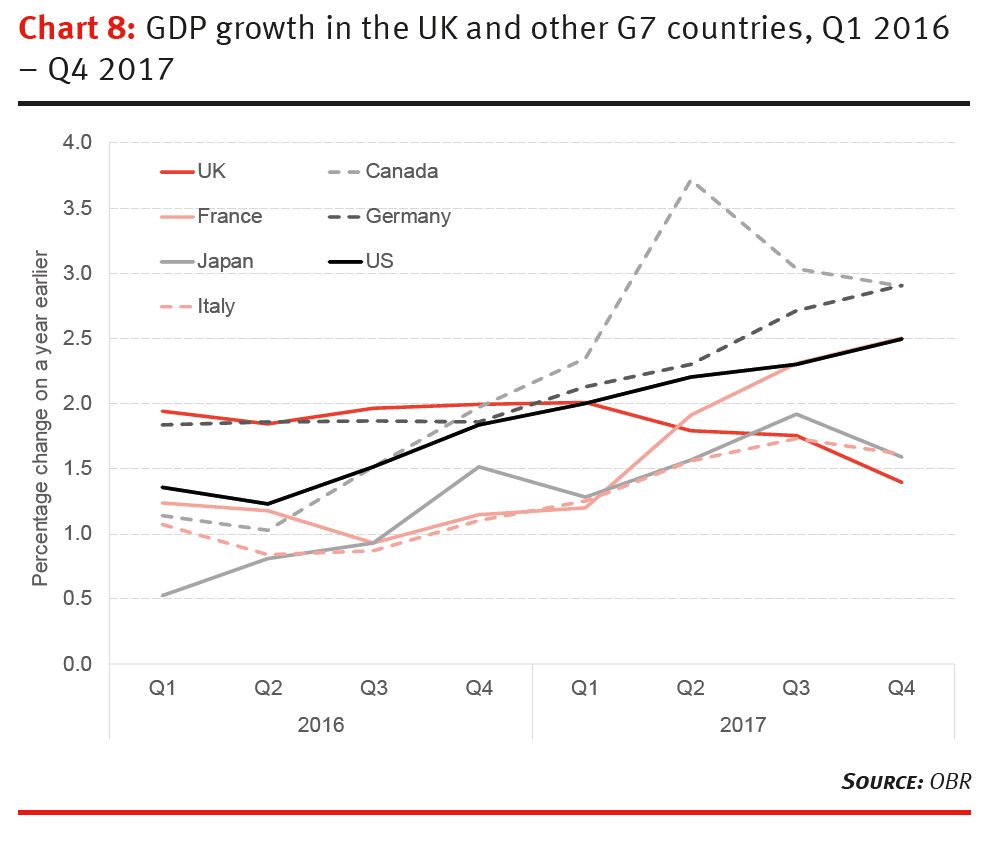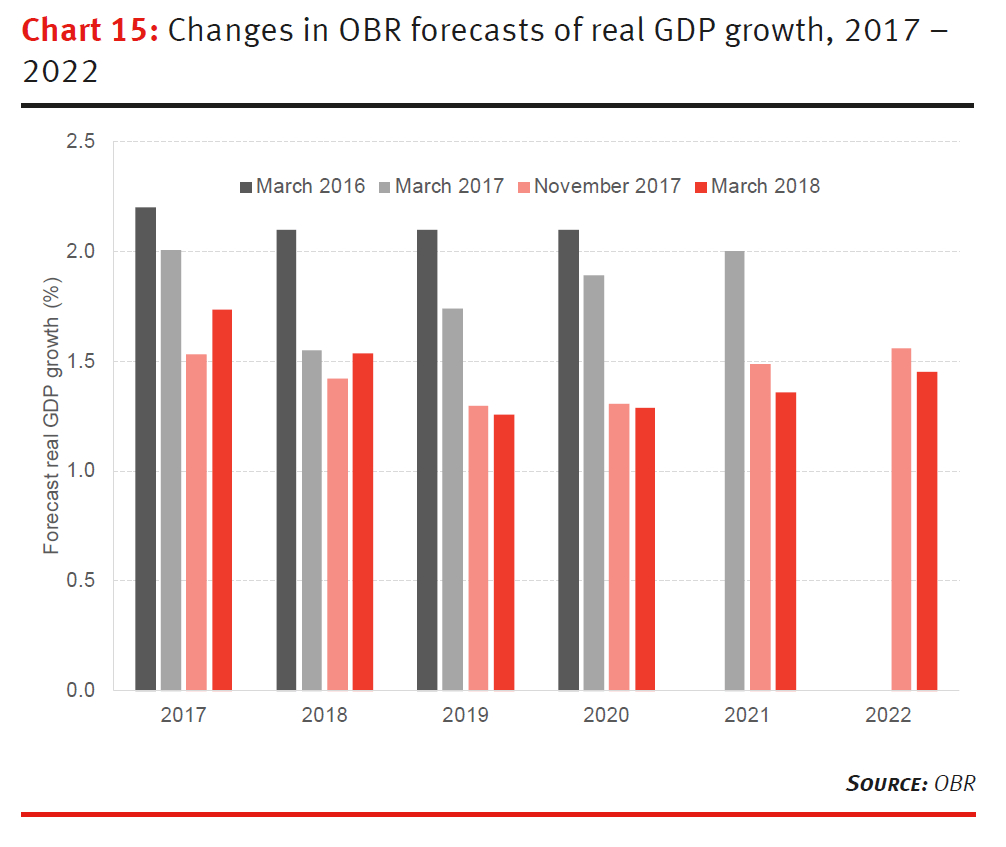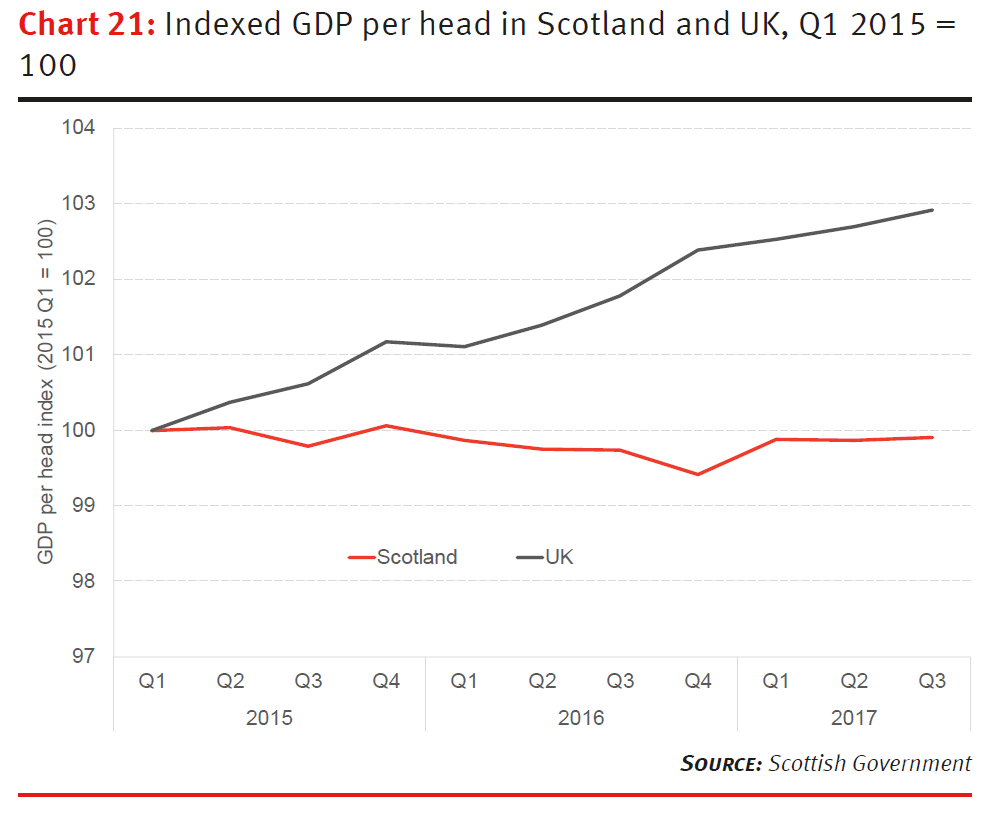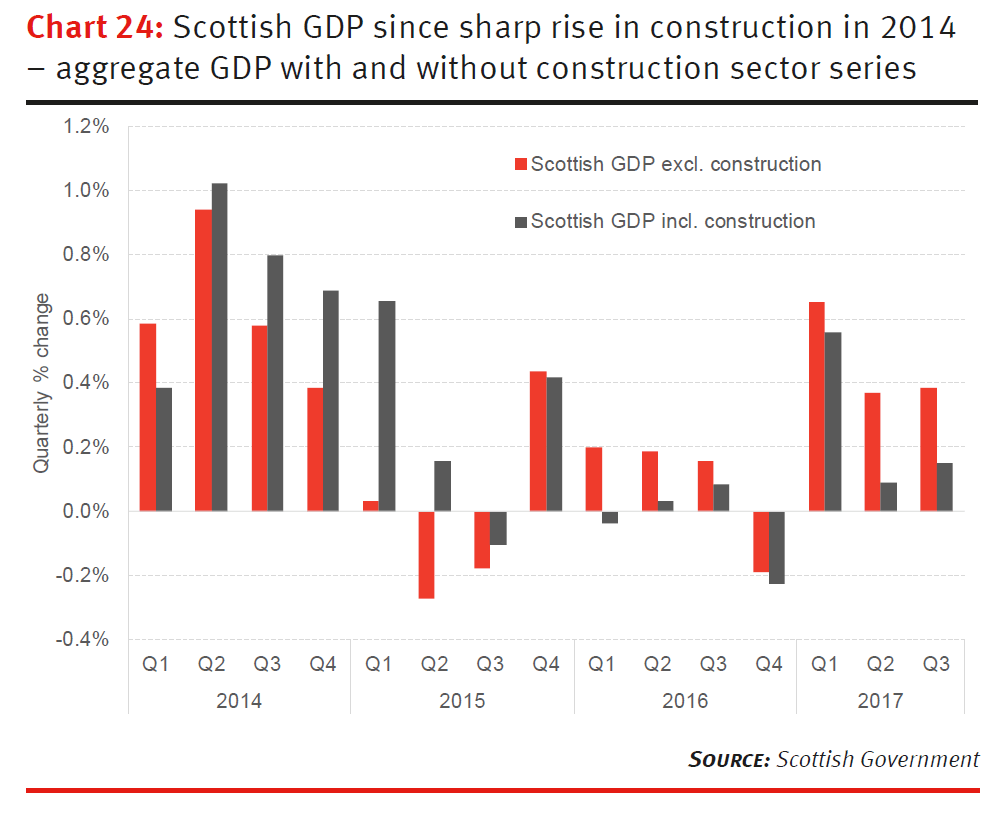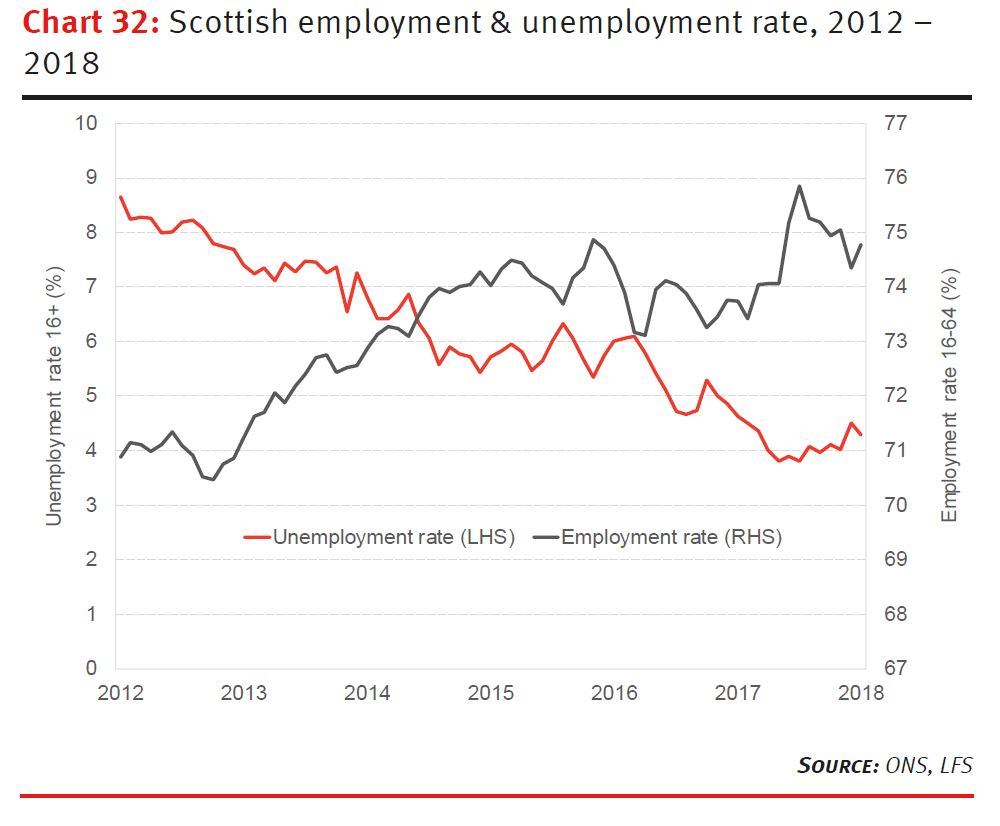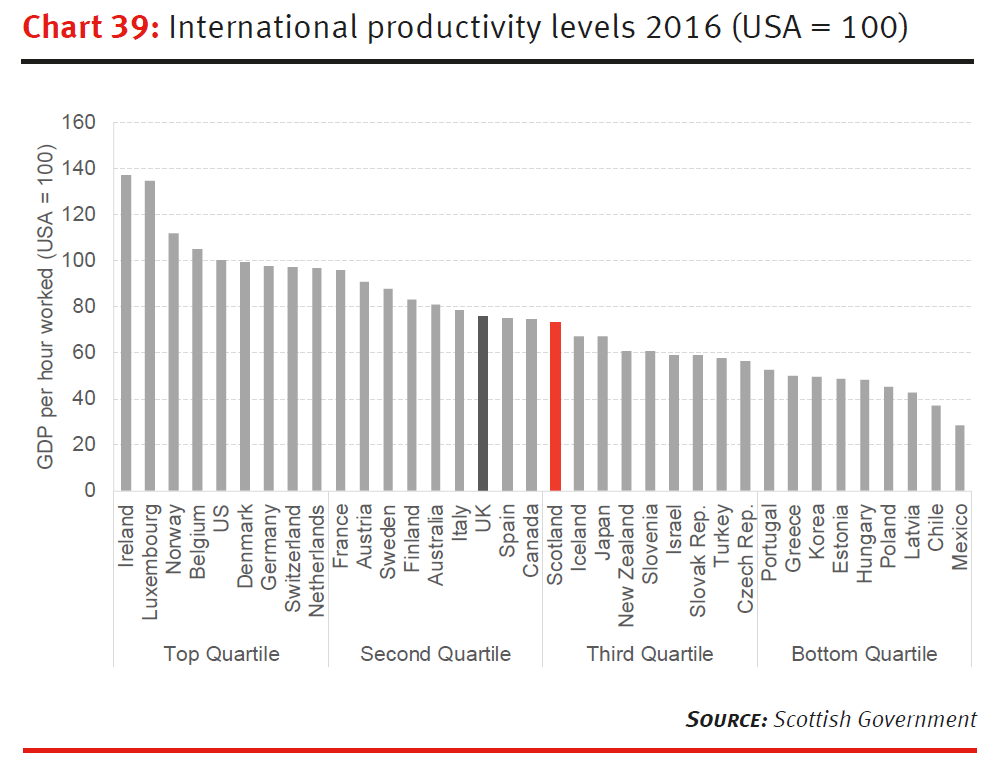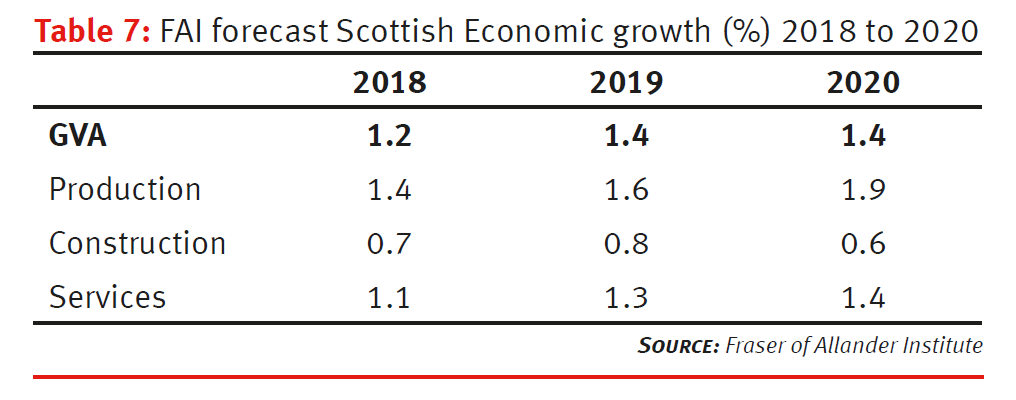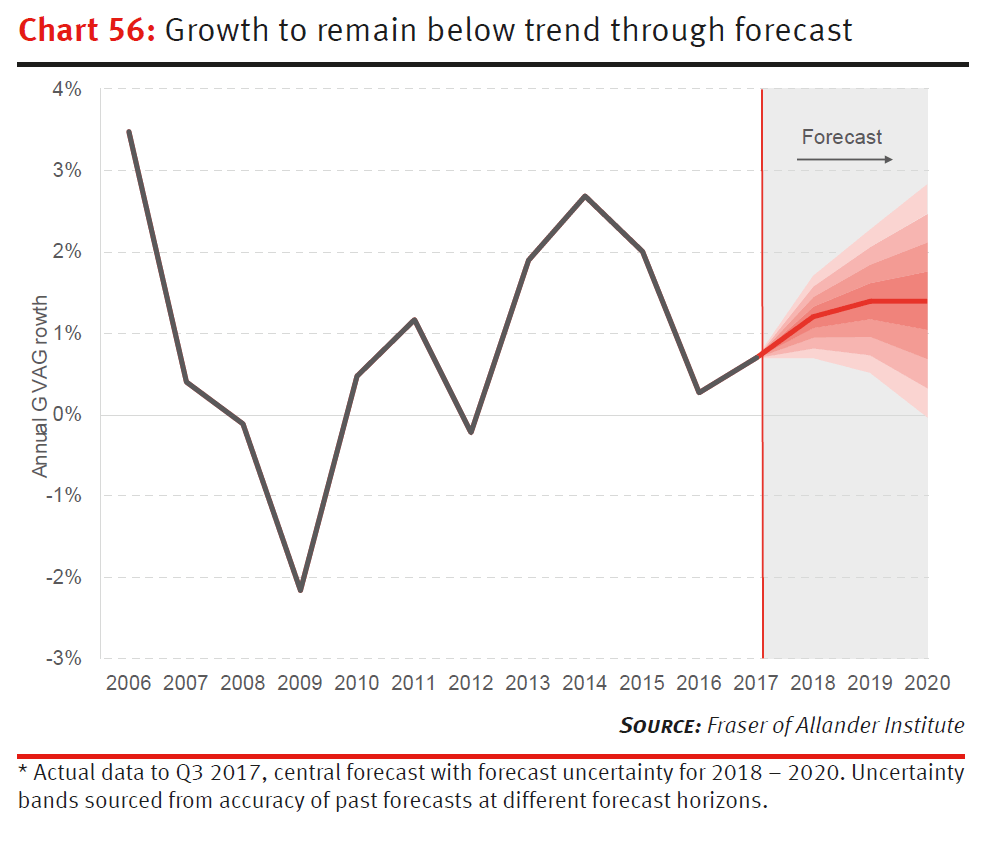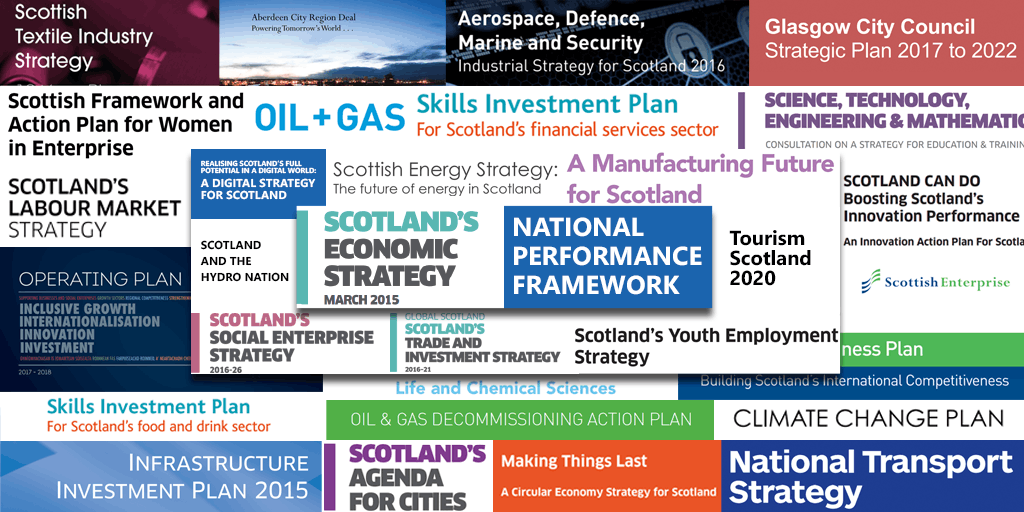Today – in partnership with Deloitte – we published our latest Economic Commentary.
Alongside the usual analysis of the Scottish economy there are some interesting articles from:
- J.R. Cuthbert – “Inter-generational equity and the Strategic Review of Water Charges in Scotland”.
- David Eiser – “Social mobility and the intergenerational transfer of advantage in labour and housing markets in Scotland: some preliminary analyses”.
Here we summarise some of the key conclusions from our outlook section.
1. The latest data continues to show that whilst the Scottish economy is growing, it continues to do so at a relatively slow pace (Chart 1).
2. Global economic activity remains relatively buoyant. World economic output is estimated to have grown by 3.7% in 2017 – half a percentage point higher than in 2016. One particular bright spot has been the turnaround in the European economy over the past year, with confidence improving across all sectors of the European economy (Chart 2).
3. The UK economy has performed slightly better than expected during the 2nd half of 2017.
Despite this somewhat better than expected performance, growth is now weaker than in many competitor countries (Chart 8).
Whilst some of this reflects temporary factors, there are concerns that the UK is entering a slower period of growth more generally.
4. Growth in 2017 has turned out to be slightly better than the OBR had expected in November – 1.7% vs. 1.5%. This has also led them to revise up their forecasts for 2018.
But these revisions in the early years of their forecast horizon are mirrored by slight declines in later years – effectively reassessing where the UK is in the ‘economic cycle’.
Moreover, the outlook remains much more pessimistic than the forecasts from just two years ago. Growth is forecast to be less than 1.5% per annum from next year right up to 2022 (Chart 15).
The key driver of this outlook is not Brexit, but weak forecasts for productivity.
5. Statisticians have revised down their assessment of how Scottish GDP per head has tracked over the past few years.
The new figures estimate that since 2015 – despite overall Scottish GDP growing 1.1% – GDP per head has actually fallen by 0.1%. Over the same period, UK GDP per head grew nearly 3% (Chart 21).
6. That being said, the recent performance of the Scottish economy may not be as bad as the headline figures suggest.
Much of the slowdown in 2015 and 2016 could be explained by the downturn in the North Sea. But in recent times, there have been some tentative signs that the sector has been faring slightly better.
Instead, the recent weak figures are being driven almost entirely by construction. As we discuss in the Commentary, we find the published construction series to be puzzling.
This is important as without the construction series, growth in Scotland would be much closer to trend.
7. Scotland’s labour market has held up relatively well despite a challenging growth environment.
Unemployment – at 4.3% – remains low by historical standards and there are 9,000 fewer people unemployed than this time last year. (Chart 32)
The most recent data shows something of a fall-back, however, in outcomes. Employment fell by 8,000 whilst unemployment rose by 5,000 during the 3 months Nov-Jan.
But given the volatility in the data, it is too early to judge with confidence – at this stage – if this is a blip or the start of a trend.
8. In a recent blog we argued that government targets for productivity have become increasingly irrelevant. Back in 2007, the target was for Scotland to be in the top OECD quartile by 2017. As at 2016, Scotland remains in the third quartile. (Chart 39)
Policy discussions have tended to focus upon how best to generate high value productivity jobs and investment – i.e. in firms at the cutting edge of innovation and technology. But increasingly, policymakers at both the UK and Scottish level are realising the importance of boosting productivity across the economy more generally.
9. Overall, our forecasts are unchanged to those from December. (Table 7 and Chart 56)
Our forecast is for growth of 1.2% in 2018 followed by growth of 1.4% in 2019 and 2020.
In short, we believe that the Scottish economy will grow this year, will quicken over the forecast horizon, but growth will remain below trend.
10. If Brexit is going to make the economic outlook even more challenging than it was already, government policy is going to need even sharper focus. Central to this is an effective strategy and delivery programme.
In 2007, the Scottish Government set out a novel approach centred upon a single economic strategy around which the entire public sector was to be aligned.
The Strategy explicitly stated that the “call to action for all arms of the public sector to support increasing sustainable growth is not an invitation for a proliferation of initiatives, however well intentioned” that all interventions would be “appraised on the basis of sound analysis and evidence” and that more effective government would assist in “reducing duplication, bureaucracy and overlap across the public sector in pursuit of greater efficiency, effectiveness and, importantly, speed of delivery”.
However, the past decade has seen a proliferation of different strategies, advisory groups and bodies which have arguably cluttered the policy and delivery landscape.
Rediscovering a unified vision for the economy which aligns all policies and organisations might just be the most significant and effective step the Scottish Government could take in 2018.
Authors
The Fraser of Allander Institute (FAI) is a leading economy research institute based in the Department of Economics at the University of Strathclyde, Glasgow.
